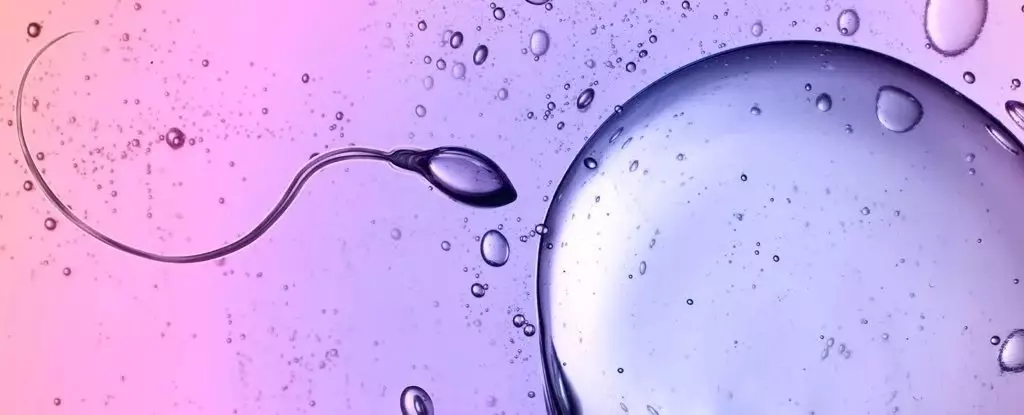In a realm where physics and biology intertwine, the inexplicable elegance of human sperm navigating through dense fluids unravels a complex narrative that teeters on the edge of our understanding. A research team, spearheaded by mathematical scientist Kenta Ishimoto at Kyoto University, has meticulously dissected the paradox of microscopic life forms moving in ways that seemingly mock the fundamental laws established by Sir Isaac Newton in the 17th century. Their groundbreaking study not only challenges traditional views on motion but also elevates our comprehension of life at the cellular level.
Newton’s third law posits that for every action, there is an equal and opposite reaction—a principle that has long stood as a pillar of classical mechanics. This symmetry, embodied in the straightforward interactions of macroscopic objects, falters dramatically when confronted with the chaotic dance of motile cells in high-viscosity environments. The implication is profound: nature does not always adhere to the guidelines we’ve imposed upon it. Sperm cells and other microswimmers defy these rules, engaging in non-reciprocal interactions that allow them to thrive in what should be inhospitable conditions.
The Surprising Mechanics of Movement
At the heart of this phenomenon lies a peculiar property of sperm flagella. Unlike rigid structures that resist motion, the thin, flexible appendages of sperm cells and green algae exhibit a so-called “odd elasticity.” This elasticity enables them to glide through viscous fluids with a remarkable efficiency, transforming potential energy losses into forward propulsion. It’s as if these cells possess an innate knowledge of how to manipulate their environment to their advantage, bending the rules of physics in the process.
What the researchers have unearthed is far more than just a detailed analysis of movement; it is a glimpse into a world where biological systems do not conform to the rigid constraints imposed by the physical laws that govern larger entities. The complexity of their findings stretches into the abstract, introducing the concept of an “odd elastic modulus” to describe the internal mechanics of these flagella. By marrying theoretical frameworks with experimental data, the study creates a vivid tableau of movement that feels both alien and familiar—a dance of life that asserts its autonomy in spite of seemingly insurmountable obstacles.
Applications Beyond the Lab
While the immediate implications of this research lie within the confines of biology and physics, the ripple effects could extend far beyond. The insights gleaned from this study have promising potential applications in robotics and material science. The prospect of designing small robots that mimic the unique propulsion systems of biological entities opens intriguing avenues for innovation. Imagine autonomous machines navigating through dense environments, effectively imitating the biological processes that have evolved over millennia.
Moreover, the principles distilled from this research could inform collective behaviors not only in biological systems but also in engineered ones. Understanding how non-reciprocal interactions manifest at both microscopic and macroscopic levels could redefine our approach to technology that operates in complex environments—robust robots that can adapt, respond, and thrive in conditions previously deemed challenging.
A Perspective on Scientific Exploration
In an age where science often seems constrained by established paradigms, the courage to challenge traditional notions of motion is commendable. Ishimoto’s study is a clarion call for open-minded exploration in the intersection of disciplines. It invites not just scientists, but thinkers of all stripes to consider the implications of nature’s apparent disregard for our constructed laws. As we delve deeper into the minutiae of microscopic life, we are not merely unraveling the secrets of nature; we are re-evaluating our place within it.
In essence, this research beckons us to contemplate the richness of life and the intricacies of motion. Each wave of a sperm cell’s flagellum and each drift of algal organisms orchestrates a symphony of life that resonates with greater questions about dynamics, autonomy, and the limits of our understanding. In this dance with nature’s unyielding truths, we find not just curiosity, but a profound respect for the complexity of existence itself. This journey into the unseen holds the promise of revolutionizing our interactions with both biological and engineered systems, inviting us to rethink our assumptions about life at every scale.



Leave a Reply